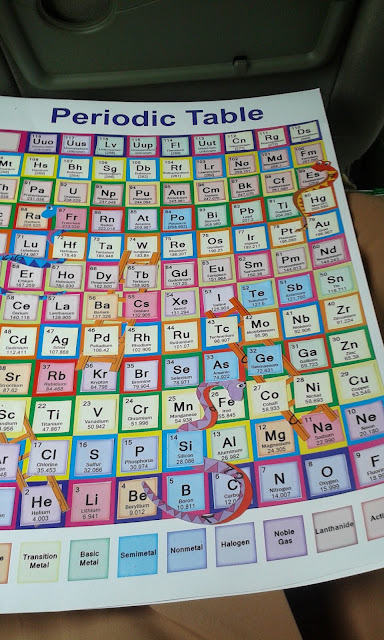TOPIC
INFORMAL LEARNING CONTEXTS -
HISTORICAL MONUMENTS AND PLAYGROUND
Submitted By
Sebin Fernandez
Physical Science
Introduction
As students most of us thoroughly enjoyed
the opportunity to step outside the classroom for a day filled with new places
to visit and fun-filled activities.
Outside the school there are many opportunities to participate in
science related experiences that are designed to provide science based
explanations.
Historical monument, playgrounds and
similar places are designed for people to pursue their interest and engage in
science related activities. Here I wish to emphasize the importance and
benefits of effective learning environments – Historical monuments and
playgrounds for informal learning.
HISTORICAL MONUMENTS
One
of the most important aspects of heritage education is experiencing our culture
first hand by visiting historical building.
A historical monument is a rich source of history. It gives
us a sense of wonder and makes us curious to know more about the past
connected with it. It generates interest
in historical
buildings and develops observation skills.
It also develops aesthetic sensibilities and installs an appreciation of
elements of architecture and our cultural heritage. Historic places have powerful and active
stories to tell. These places help
students develop skills as well as knowledge, students learns to observe,
gather facts, compare and contrast, synthesis and analyses evaluate source of
evidence, develop and test hypothesis and draw conclusion
Teaching with historic places is a
wonderful model to teach. It help links
us to our roots and underpins our sense of cultural identity. The historic environment contributes
significantly to people’s sense of place and their enjoyment of different
spaces.
ADVANTAGES
1. Historic monuments provide a setting for a
great variety of local activities.
2. It gives us a long term view of social and
environmental change.
3. The historic characters is not only
attractive in its own right, but it can act as a catalyst for creative new
designs
4. The historic environment provides focus and
resource for lifelong learning about the human past and how people have
inhabited the landscape and used the natural resources.
5. Archaeological and historic site power place
for recreation, attracting local people and visitors alike.
PLAYGROUND
Children are
experts at play. Play is how children
interact with others and experiences the world around them. Play is experimenting. Co-operating, observing taking risks,
achieving success, learning from failure and of course having fun. While play
is essential to the physical and emotional
growth of children, it is also central to adult social interactions and continued
development throughout life. Play is
characterized by intrinsic motivation active engagement, attention to means and
freedom from external rules. Bruner
described play as a means for acquiring information about and experiencing the
environment. In his view, play provides opportunities for children to try new
combination of behaviors and to master routines that make later observational
learning possible. By working outdoors children build a vocabulary of routines
and experiences that relate to and enhance their understanding of their
everyday physical world. They are inexpensive and offer a wide variety of play
options .Trees, Shrubs, Ground covers can provide different scents, textures,
shapes, colors and creative play.
ADVANTAGES
1. Children develop social skills to
communicate, share, collaborate and empathize with others.
2.
Children are creative about what
and how games are played.
3. Playground assesses risk and tackles new
challenges in children by developing thinking and problem solving skills.
4.
Children master new skills and
they play with other children and improve their competence and confidence.
5.
Play helps in managing physical and
social challenges and keeping themselves
safe.
Conclusion
Informal settings provide space for all
learners to engage with ideas, bringing their prior knowledge and experience to
bear. Historical monuments and playgrounds are characterized as places where
motivation is internal, the content is variable and possibly un-sequenced
attendance is voluntary and there is more diversity in the learners’
backgrounds. These can offer rich learning opportunities for our students and
can provide environmental context and land ethic. Further, these two field
experiences can reach students who have difficulties in grasping subject matter
and provide holistic experiences.
Reference
· Learning Science in informal Environments,
Philip Bell, Michael A. Feder
· http.//www.meritnation.com
· http.//www.nap.edu/read/12190


